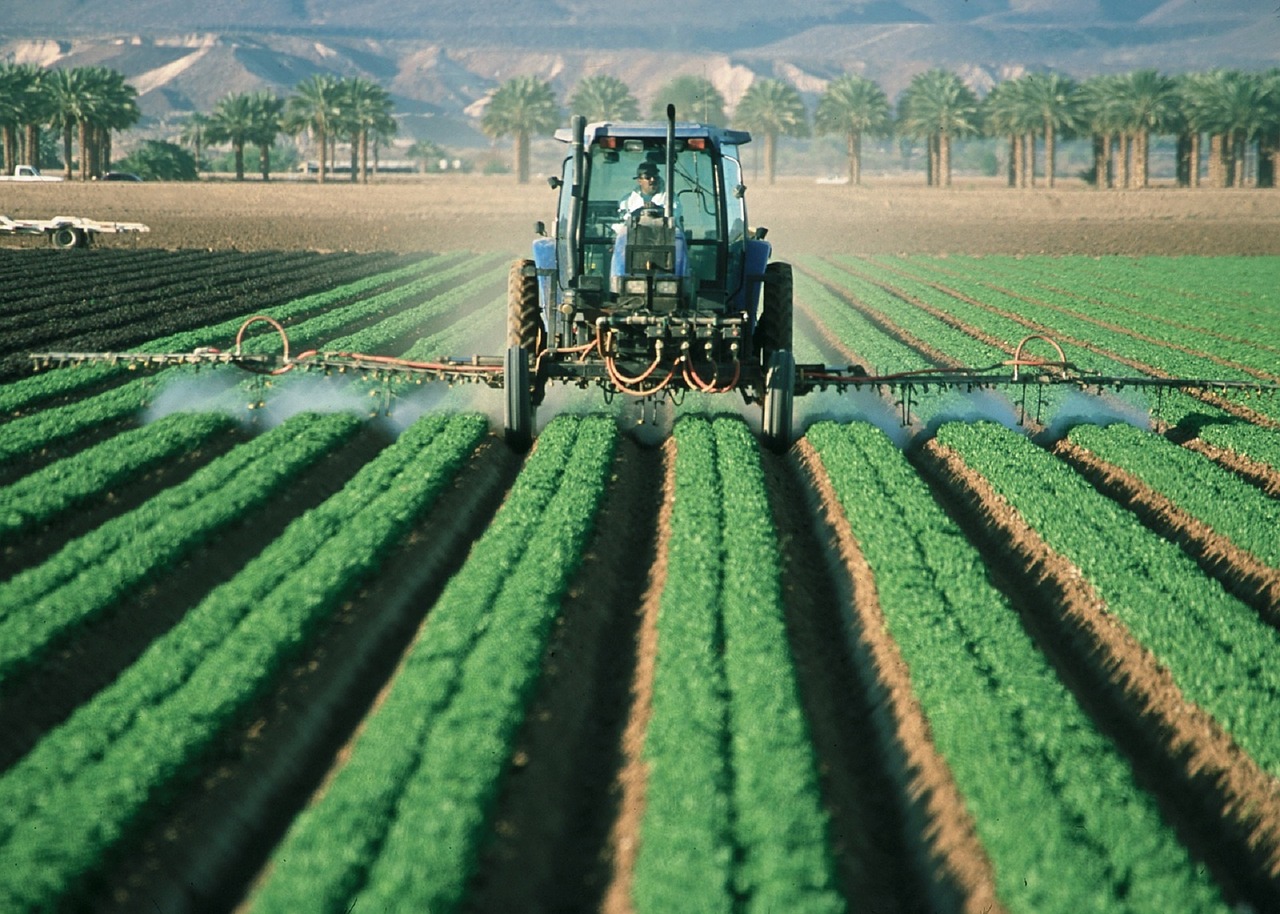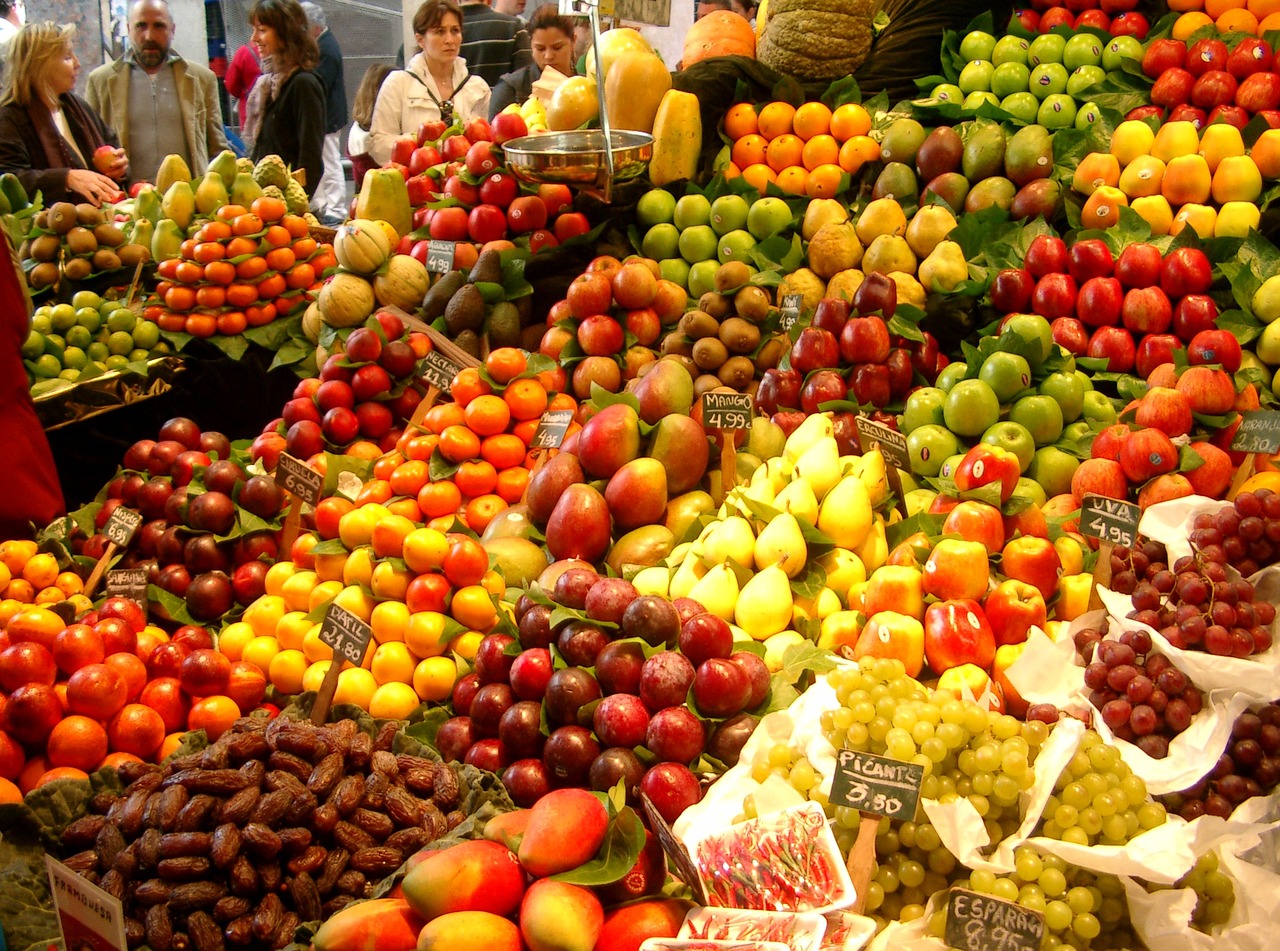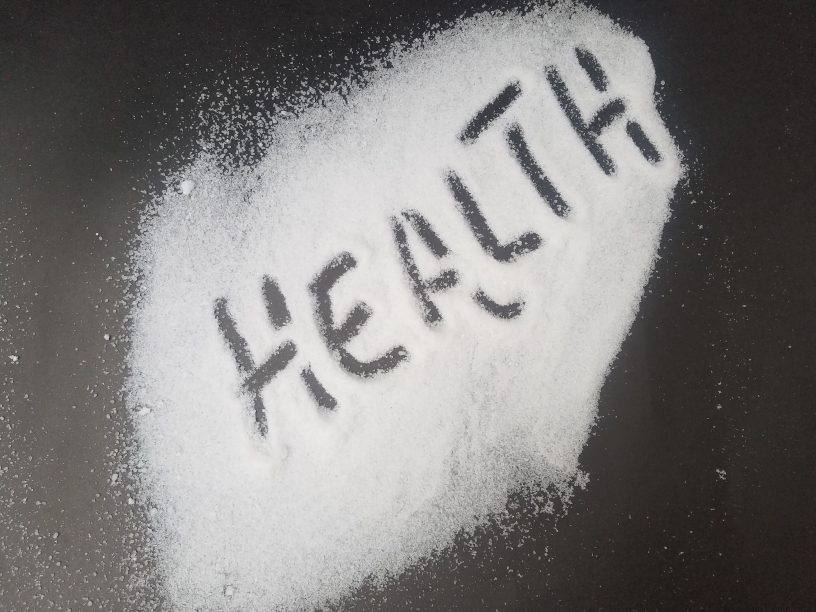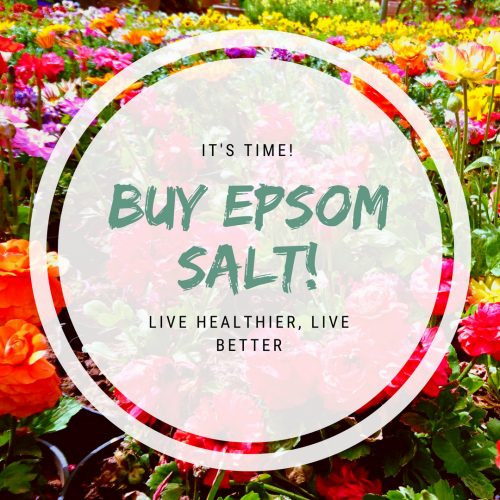The Decline in Food Nutrients and How to Counter it
Introduction to the Problem
Nowadays, as society grows more affluent and the populace more educated, public awareness of certain issues has increased. As such awareness is raised about environmental quality and there is growing concern about the quality of our food and accountability in the agricultural processes. There have been many scientific studies conducted that compare historical food composition tables with modern ones. The results have shown a disturbing decline in food nutrients content over the past 70 years. The main reason for this decline has been attributed to soil degradation and the “mining” of soil fertility by modern agriculture.

In an open letter addressed to USDA Secretary Dan Glickman by Cheryl Long the Senior Editor of Organic Gardening (Rodale Press) in 1999, this very issue was questioned. Refrencing two studies quoted in the letter, the vitamin and mineral content of American and British food appeared to be reducing over time. One study, titled “Nutrition Under Siege” (Jack, 1998), examined data published by the USDA ARS Nutrient Data Laboratory and concluded that a comparison of the data “show(s) a sharp decline in minerals, vitamins and other nutrients in many foods since the last comprehensive survey published over twenty years ago”, which was attributed to “a steady deterioration in soil, air, and water quality”. In a similar study (Mayer, 1997), Anne-Marie Mayer compared British data over a fifty year period and noted “significant reductions” in the levels of minerals in fruit and vegetables and questioned if modern agriculture could be responsible for the reduction. Long’s letter to the USDA expressed concern that these stated declines “may well be a result of the ‘mining’ of our nation’s soil fertility by intensive chemically based agriculture.[1]
Soil Depletion and Related Issues

Steadily and alarmingly, humans have been depleting Earth’s soil resources faster than the nutrients can be replenished. If this trajectory does not change, soil erosion, combined with the effects of climate change, will present a huge risk to global food security over the next century, warns a review paper authored by some of the top soil scientists in the country.
Humans have been depleting and consuming the Earths soil resources much faster than they can be replenished. A mix if soil erosion combined with climate change presidents a deadly risk to our global food quality. This . Warning was issued in a review paper by some of the top soil scientists in the world.
The paper highlights modern farming practices which accelerate erosion ad nutrient removal.
The paper singles out farming, which accelerates erosion and nutrient removal, as the primary game changer in soil health.

“Ever since humans developed agriculture, we’ve been transforming the planet and throwing the soil’s nutrient cycle out of balance,” said the paper’s lead author, Ronald Amundson, a UC Berkeley professor of environmental science, policy and management. “Because the changes happen slowly, often taking two to three generations to be noticed, people are not cognizant of the geological transformation taking place.”
The paper published in the journal Science, says that ever since the industrial revolution, soil erosion has accelerated. It describes soil as “the living epidermis of the planet,” and further states the ability of the soil to support food growth is plateauing. Some of the issues bound to arise due to this are mentioned below.
A future ‘phosphorous cartel’
A change in world economic and political dynamics could occur due to this issue. The authors of the paper have identified the supply of fertilizer as one of the key threats to future soil security. Three essential nutrients are prominent in fertilizers: nitrogen, potassium and phosphorous.
The discovery Synthetic nitrogen (1900s) is credited by The paper for increasing crop yields exponentially. This in turn suported a worldwide massive boom in population. Due to the fact that the process for notrogen production is so energy-intensive, its supply is dependent on fossil fuels.
We now must examine the fact that unlike nitrogen, potassium and phosphorous are naturally occurring minerals easily found stored in rocks. However there supply is not equally distributed throughout the world.USA only has 1-2% of the world potassium reserves, and its reserves of phosphorous are expected to run out in about three decades.
“This could create political challenges and uncertainties,” said Amundson. “Morocco will soon be the largest source of phosphorous in the world, followed by China. These two countries will have a great deal of say in the distribution of those resources. Some people suggest we will see the emergence of a phosphorous cartel.”
Contributing to climate change
Soil security is also threatened by the fact that it serves as a mass reservoir for Carbon. When left undisturbed, soil can contain its stores of carbon for hundreds to thousands of years. Recent estimates suggest that the top three meters of soil stores approximately 2,300 gigatons of carbon. That is is a greater amount of carbon than in all the world’s plants and atmosphere combined. One gigaton is equal to a billion tons.
However, due to agriculture’s physical disruption of soil, stored carbon is released into the atmosphere. Calculated using the areas of land used for farming throughout the world, by now 50-70 first one of carbon has been released in the air in human history. And you all know this is disastrous for the environment.
Some scientists are avid proponents of sequestration, the long-term storage of carbon in soil, have argued that regaining this carbon will be a means to mitigate continuing fossil fuel emissions of the greenhouse gas.
“Carbon sequestration plans won’t make a dent in the amount of soil released by climate change,” countered Amundson. “The amount of carbon stored through sequestration would be tiny compared to the potential amount lost through global warming.”
We should be particularly concerned about the large carbon stores in the soils in the planet’s polar regions. Researchers have found that temperatures are increasing at greater rates in the northern latitudes.
“Warming those areas is like filling your freezer with food, then pulling the plug and going on vacation,” said Amundson. “There will be a massive feast of bacteria feeding on the food as the plug gets pulled on the stored carbon in the frozen soil. Microbes are already starting the process of converting the carbon to CO2 and methane.”
A Solution
Recycling soil nutrients

The conclusion of the paper argues for recycling of soil nutrients. The authors recognize and acknowledge the human reliance on farming and the note that most of the productive soil on earth is already being farmed. The crux of their argument is that we shoe recycle the waste discarded by factories which, many times has potassium and phosphorus in it. Also while doing this we need to more efficiently manage our soils so that we lose less nutrients. For example excess nitrogen is considered to be a pollutant. Its runoff saps oxygen from the nation’s waterways, suffocating aquatic life and creating dead zones in coastal margins.
“We should be able to do this with soil,” said Amundson. “The nutrients lost can be captured, recycled and put back into the ground. We have the skillset to recycle a lot of nutrients, but the ultimate deciders are the people who create policy. It’s not a scientific problem. It’s a societal problem.”
Other authors on the paper are Asmeret Asefaw Berhe, an associate professor of soil biogeochemistry at UC Merced; Jan Hopmans, a professor of hydrology at UC Davis; Carolyn Olson, a senior scientist at the U.S. Department of Agriculture Climate Change Program; A. Ester Sztein, assistant director at the National Academy of Sciences Board on International Scientific Organizations; and Donald Sparks, a professor of plant and soil science at the University of Delaware.
Nutritional Content in Our Food Nowadays

It would be overkill to state that the carrot you eat nowadays has little or no nutrition in it—especially compared to a number of Other less healthy foods you doubtless additionally eat—but it’s true that fruits and vegetables fully grown decades past were abundant richer in vitamins and minerals than the varieties most people get nowadays. The clearest perpetrator during this troubling nutritionary trend is soil depletion: New intensive agricultural Technologies have stripped increasing amounts of nutrients from the soil within which the food we tend to eat grows. Sadly, every sequential generation of fast-growing, pest-resistant carrot is actually less Nutritious for you than the one before.
A landmark study on the subject by Donald Davis and his team of researchers from the University of texas (UT) at Austin’s Department of Chemistry and organic chemistry was printed in December 2004 within the Journal of the american college of Nutrition. They studied U.S. Department of Agriculture nutritional data from each 1950 and 1999 for forty three completely different vegetables and fruits, finding “reliable declines” within the quantity of protein, calcium, phosphorus, iron, lactoflavin (vitamin B2) and vitamin c over the past half century. Davis and his colleagues chalk up this declining nutritionary content to the preponderance of agricultural practices designed to enhance traits (size, rate of growth, pest resistance) except nutrition.
“Efforts to breed new types of crops that give bigger yield, pest resistance and climate ability have allowed crops to grow larger and earlier,” rumored Davis, “but their ability to manufacture or uptake nutrients has not kept pace with their rising.” There have doubtless been declines in different nutrients, too, he said, similar to magnesium, zinc and vitamins B-6 and E, however they weren’t studied in 1950 and additional analysis is required to seek out out what quantity less we tend to have gotten of those key vitamins and minerals.
Professor Michael Crawford and Yoqun Wang of London Metropolitan University found that a chicken in 2004 contained over double as much fat as in 1940, a 3rd additional calories and a 3rd less protein – While protein is what the buyer is paying for. As academic Crawford says, ‘We now need a new definition of what we mean by a healthy food.’
According to the most recent U.S. Dietary Guidelines, there are seven important nutrients in food that most Americans aren’t getting in sufficient amounts:
Calcium
Potassium
Fiber
Magnesium
Vitamin A
Vitamin C
Vitamin E
The Results of fewer Nutrients
A former geologist David Thomas recently presented charts which suggest a correlation between increases in deficiency diseases (cardiovascular problems, asthma, bronchitic and orthopaedic deformities), and decreasing levels of magnesium in the diet. ‘I’m convinced mineral depletion is part of our current health crisis and increase in lifestyle diseases. I’m not saying it’s the whole problem – but if we want to be happier and healthier, we have to understand we are part of the environment and not separate from it. A significant part of that environment is our food, and that is declining in quality over time,’ says Thomas. [2]
Here in this article we are going to be focusing solely on magnesium. One of the most important minerals for the body.
Magnesium and the Body
Magnesium is a necessary mineral for human nutrition.
Function
Magnesium is required for over three hundred biochemical reactions within the body. It helps to take care of traditional nerve and muscle Operations, supports a healthy immune system, keeps the heart beat steady, and helps bones stay sturdy. It additionally helps regulate blood sugar levels and aid with the production of energy and protein. there’s in progress analysis into the role of magnesium in preventing and managing disorders like high Hypertension, cardiovascular disease, and diabetes. However, taking metallic element supplements isn’t really advisable. Diets high in protein, calcium, or vitamin D can increase the requirement for magnesium.
Our solution to this issue is to use no supplements but rather to allow your body to absorb the minerals it needs naturally. The best method to get the necessary magnesium is to take Epsom salt baths.
About Epsom Salt
Epsom Salt is magnesium sulphate. An inorganic salt having the formula MgSO4(H2O)x where 0≤x≤7. You can find it most often in the form of the heptahydrate sulfate mineral epsomite (MgSO4·7H2O), commonly known as Epsom Salt. Globally, the overall annual usage in the mid-7s was 2.3 million tons, of which most was used in agriculture.
Epsom salt has been historically used as a element of bath salts. Epsom salt may also be used as a beauty product. Athletes use it To relax sore muscles, whereas gardeners use it to enhance crops. it has a range of alternative uses: for instance, Epsom salt is additionally effective At the removal of splinters.
It is on the World Health Organization Model List of Essential Medicines, the foremost necessary medications required in a very basic health system. Magnesium sulfate may be a common mineral pharmaceutical preparation of magnesium, ordinarily referred to as Epsom salt, and used both outwardly and internally. Magnesium sulfate is very soluble and solubility is repressed with lipids generally utilized in lotions. Lotions typically use the employment of emulsions or suspensions to incorporate each oil and soluble ingredients. Hence, magnesium sulfate in a lotion might not be as freely accessible to migrate to the skin nor to be absorbed through the skin, thence each studies might properly recommend absorption or lack thence as a function of the carrier (in a water solution vs. in an oil emulsion/suspension). Temperature and concentration gradients may additionally be contributive factors to absorption.
Externally, magnesium sulfate paste is employed to treat skin inflammations akin to little boils or localised infections. better-known within the Great Britain as ‘drawing paste’ it’s additionally accustomed take away splinters. The quality British assemblage composition is dried sulphate forty seven.76 % w/w, Phenol 0.49 % w/w. and glycerine (E422).
Internal uses include:
- Oral sulphate is often used as a saline laxative or diffusion purgative.
- Replacement medical aid for hypomagnesemia
- As a medicine when beta-agonist and anticholinergic agents are tried, e.g. in severe exacerbations of asthma attack
- Magnesium salt may be nebulized to cut back the symptoms of acute asthma attack
- It’s ordinarily administered via the intravenous route for the management of severe asthma attack attacks.
- Magnesium sulfate is effective in decreasing the chance that pre-eclampsia progresses to eclampsia.
- Magnesium sulfate is employed to stop and treat seizures of eclampsia.
- It reduces the pulse blood pressure however does not alter the pulse blood pressure, that the blood insertion to the foetus is not compromised.
- It’s additionally ordinarily used for eclampsia wherever compared to Valium or phenytoin it leads to better outcomes.
Where to Find Epsom Salt?

Charda Suuraj EPSOM SALT
[add_to_cart id=”1398″ sku=”012018″ style=”center” show_price=”false”]
Or alternatively click to visit the shop!
[1] http://soils.wisc.edu/facstaff/barak/poster_gallery/minneapolis2000a/
[2] https://amp.theguardian.com/lifeandstyle/2005/may/15/foodanddrink.shopping3







Sonali @thejetsetgocouple
Loads of info packed in this article. I was very well aware of teh deteriorating quality of nutrients in our food crops but the reasons mentioned here are very informative. Moreover, the information regarding epsom salt, its chemical composition and benefits is really eye-opening. Great job!
Daima Hussain
Thank You!
Ntensibe Edgar Michael
Wwwwooooaaaahhhhhhhhh…truly an article worth re-reading, over the years, Daima!
Thanks honey, for sharing.
Daima Hussain
It was our pleasure to share!
Ntensibe Edgar Michael
You’re welcome.